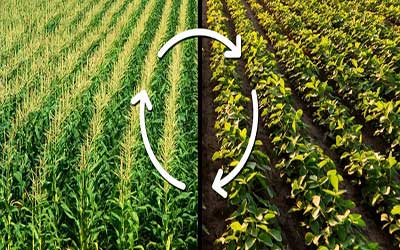Date: 06/05/2023
Relevance: GS-3: Major Crops - Cropping Patterns in various parts of the country, - Different Types of Irrigation and Irrigation Systems; Storage, Transport and Marketing of Agricultural Produce and Issues and Related Constraints
Key Phrases: Indian agricultural sector, farm indebtedness, loss of crop diversity, declining farm incomes, National Statistical Office’s Situation Assessment, surplus income, loan waiver, Land and Livestock Holdings, mono-cropping, crop diversity, cooperative societies, SHGs, Indigenous Crops.
Why in News?
- The Indian agricultural sector has been grappling with the issue of farm indebtedness for several years now.
- The primary reason for this is the loss of crop diversity, which has resulted in reduced crop yields and declining farm incomes.
The Problem of Farm Indebtedness
- State governments provide interest rate subsidies on farm loans, and the Centre keeps raising the target for farm credit and spends huge sums on procuring wheat and paddy.
- If the MSPs for 23 crops are paid, the expenditure will reach lakhs of crores. State governments have waived farm loans worth ₹4.7-lakh crore in the last 10 years, but these initiatives have had little impact on farmers’ indebtedness.
- As per the National Statistical Office’s Situation Assessment of Agricultural Households and Land and Livestock Holdings of Households in Rural India 2019 Survey, the percentage of agricultural households in debt decreased slightly from 52 percent in 2013 to 50.2 percent in 2019.
- The average outstanding loan increased by 58 percent to approximately ₹74,000. The cost of cultivation has increased by 35 percent, which erodes farmers’ net profit.
- Minister of State for Finance in his reply to Lok Sabha in July 2021 said the farmers have a debt of ₹16.8-lakh crore.
- Farmers need surplus income, which will help them repay the loans and create economic assets.
The Danger of Mono-Cropping:
- In the 1990s, Vidarbha farmers converted more than 70 percent of their farmland into BT cotton, despite the soil there not being conducive to cotton cultivation.
- Similarly, sugarcane farmers in other parts of Maharashtra, and rice and wheat farmers in Punjab and Haryana made farming unsustainable with mono-crops.
- Farmers in most parts of Andhra Pradesh, Tamil Nadu, Telangana, Karnataka, Odisha, and West Bengal grow cheap high-yielding rice to get the MSP; they cause immense damage to crop diversity.
- Mono crops have destroyed the food backup in Kerala and forced the State to buy three-fourths of its food requirement from neighbouring States.
Importance of Saving Indigenous Crops:
- India has lost more than one lakh varieties of indigenous rice after the 1970s; many exotic varieties of crops have disappeared.
- Had India saved the native crops it would have been the chief food exporter of the world today.
- The rich dietary diversity in India is a boon for the agriculture sector. The native food items if promoted will create demand for diversified crops and increase farmers’ income.
The Importance of Small Farms in Crop Diversity:
- Nearly 85 percent of the farm households in India have less than two hectares of land, and the average landholding does not exceed 0.5 hectares per household.
- Experts have always questioned the viability of small landholding. Interestingly, small farms contribute 51 percent of agriculture output and have a 70 percent share in high-value crops.
- Small farmers need to organize themselves through healthy cooperative societies, SHGs, and farmers' clubs to boost their incomes.
The Role of Non-Farm Activities in Boosting Incomes:
- A family with a small landholding can double their income by undertaking non-farm activities such as making handicrafts, weaving clothes, and making hundreds of other products.
- Some of the non-farm products like Patta Chitra of Odisha, handloom silk sarees of Tamil Nadu, Andhra Pradesh, and Maharashtra, the metal craft of Chhattisgarh and Telangana, the Pashmina shawl of Ladakh, and the handmade carpet of Kashmir have incredibly high-value addition.
Safeguarding crop diversity:
- Documentation of the germplasm of all native crops, registration of native foods with UNESCO, and Geological Indicators for those local products will safeguard crop diversity.
- Crop diversity will maintain soil fertility, conserve water and meet the nutrition needs of people.
- It will save expenses on chemical fertilizer, pesticides, hybrid seeds, and other farm inputs. Apart from boosting farm incomes, banks can also increase credit to the farm sector.
- Restoring crop diversity is vital for addressing farm indebtedness. Farmers need surplus income, which will help them repay the loans and create economic assets.
Conclusion:
- In conclusion, promoting crop diversity is essential for the economic and ecological sustainability of Indian agriculture.
- By focusing on promoting crop diversity, the Indian government can not only support small farmers, reduce their dependence on chemical inputs, and ensure food security for the country, but also reduce their indebtedness.
Source: The Hindu BL
Mains Question:
Q. Discuss the importance of crop diversity for addressing farm indebtedness and achieving sustainable agriculture in India.







